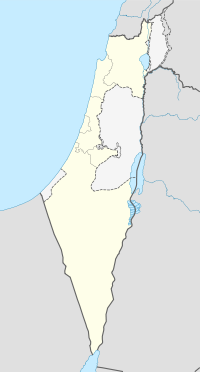- Sharuhen
-
Sharouhen
Sharouhen était une ville antique dans le désert du Néguev, entre Rafah et Gaza.
Sommaire
Histoire
Après l'expulsion par Ahmôsis Ier des Hyksôs d'Égypte vers -1550, ces derniers se sont réfugiés à Sharouhen et l'ont enrichie. Les armées du pharaon Ahmôsis Ier ont capturé et rasé la ville après un siège de trois ans.
La destruction de Sharouhen fait partie de la reconquête égyptienne. Les Égyptiens de la XVIIe dynastie s'étant sentis profondément humiliés par les XVe et XVIe dynasties des Hyksôs, les dirigeants de Thèbes ont lancé une guerre ambitieuse, menée par Séqénenrê Taâ II contre le roi étranger Apophis Ier pour reprendre le delta du Nil.
Bien que sa propre campagne pour expulser les Hyksôs d'Égypte ait échoué, et qu'il fût lui-même tué dans la bataille, son fils Kamosé a lancé une attaque sur la capitale des Hyksôs, Avaris. C'est cependant son jeune frère Ahmôsis Ier qui réussi à reprendre Avaris et à en expulser les Hyksôs.
Ahmôsis Ier s'est ensuite engagé dans un siège de trois ans de Sharouhen, citadelle méridionale de la Palestine. Son succès a été continué par son successeur Thoutmôsis Ier, qui étendit l'influence égyptienne prolongée jusque le royaume de Mitanni dans le nord et la Mésopotamie dans l'est.
Dans les textes
Sharouhen est mentionné sur la tombe d'Ahmôsis Ier et dans la liste de conquête de Thoutmôsis III.
Elle est mentionnée également dans la Bible (Josué 19.6), elle fait partie de l'héritage de la tribu de Siméon, au milieu de Juda.
Elle pourrait également faire partie des textes de Ras Shamra[1].
Le site archéologique
Sharouhen a été identifiée avec Tel el-Farah, puis Tel el-ajjul, au sud de l'État actuel d'Israël.
Notes
- ↑ Paul Humbert, Shârouḥén dans des textes de Ras Shamra, Syria, T. 17, Fasc. 3 (1936).
Bibliographie
- John R. Baines, Jaromir Málek, Cultural Atlas of Ancient Egypt, Checkmark Books, Oxford, 2000
- Margaret R. Bunson, Encyclopedia of ancient Egypt, Facts on File, New York, 2002
- Stephen Quirke, Jeffrey Spencer, The British Museum Book of ancient Egypt, Thames and Hudson, New York, 1992

Histoire • Géographie • Mythologie • Dieux • Art / Pyramides • Sciences • Vie quotidienne / Organisation politique / Pharaons Égyptologie • Bibliographie • Lexique • Index Egyptopedia Un article égyptologique au hasard : Modifications du jour - Portail de l’Égypte antique
- Portail de l’archéologie
Catégories : Site archéologique d'Israël | Histoire militaire de l'Égypte antique
Wikimedia Foundation. 2010.

